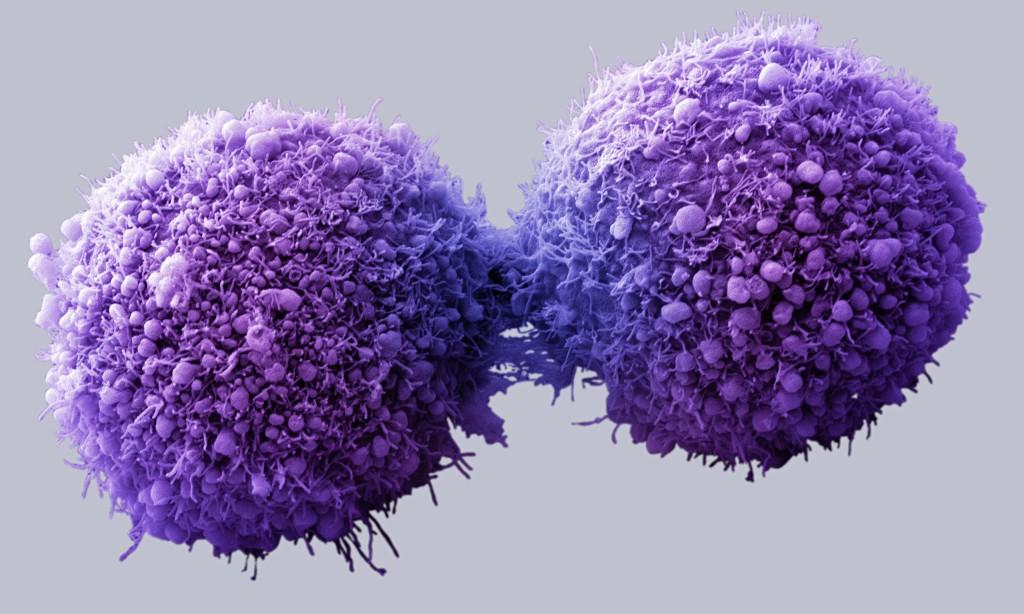 Lately, it’s rare to hear the words ‘medical’ and ‘experimental’ without 3D technology being included as well. A range of different 3D imaging techniques, along with 3D printing, are currently responsible for a massive expansion in the toolset of medical professionals around the world–allowing them to not only add to the quality of life for many, but sometimes preserve it as well.
Lately, it’s rare to hear the words ‘medical’ and ‘experimental’ without 3D technology being included as well. A range of different 3D imaging techniques, along with 3D printing, are currently responsible for a massive expansion in the toolset of medical professionals around the world–allowing them to not only add to the quality of life for many, but sometimes preserve it as well.
The never-ending push to prevent and ‘cure’ cancer involves an enormous number of scientists always looking toward using the latest in groundbreaking technology. Pushing the limits to find better treatments, better ways to research, and always reaching toward finding a way to beat the dreaded disease means employing many new methods. Now, the world’s largest database for cancer drug discovery has some new additions in the form of 3D structures, which are leading to new ways in studying tumor cells.
 canSAR is an enormous database–and an invaluable resource being used around the world by scientists and medical professionals. The database was created in 2011 by researchers in London. Beginning with 1.7 billion experimental measurements, canSAR has continued to grow and assist researchers as they attempt to figure out exactly how cancer cells behave–and how to stop them.
canSAR is an enormous database–and an invaluable resource being used around the world by scientists and medical professionals. The database was created in 2011 by researchers in London. Beginning with 1.7 billion experimental measurements, canSAR has continued to grow and assist researchers as they attempt to figure out exactly how cancer cells behave–and how to stop them.
A recent paper, ‘canSAR: an updated cancer research and drug discovery knowledgebase,’ by Joseph E. Tym, Costas Mitsopoulos, Elizabeth A. Coker, Parisa Razaz, Amanda C. Schierz, Albert A. Antolin, and Bissan Al-Lazikani, works to examine important new enhancements to the database, including:
- New data
- Improved search and browsing capabilities
- New disease and cancer cell line summaries
- New and enhanced batch analysis tools
The authors state that canSAR is indeed the most comprehensive ‘druggability assessment resource containing multidisciplinary druggability assessments for the majority of the human proteome’ available in the world, and encompasses a comprehensive architecture for linking all types of data within its base.
According to the paper, a new and refined canSAR Target Synopsis provides a wide range of data including functional data, protein families, 3D structure, chemical bioactivities and pharmacological data, genetic and gene transcriptional alterations, and pharmacologically annotated protein interaction networks and other data.
“Our database is constantly growing with information and is the largest of its kind — with more than 140,000 users from over 175 countries, and we regularly develop new artificial intelligence technologies that help scientists make predictions and design experiments,” said Dr. Bissan Al-Lazikani, team leader in computational biology at the Institute of Cancer Research, London, and leader of the Cancer Research UK-funded team that developed canSAR. “Our aim is that cancer scientists will be armed with the data they need to carry out life-saving research into the most exciting drugs of the future.”
“Scientists need to find all the information there is about a faulty gene or protein to understand whether a new drug might work. These data are vast and scattered, but the canSAR database brings them together and adds value by identifying hidden links and presenting the key information easily.”
 The addition of 3D structures will allow researchers to forge even further in producing new cancer treatments. The database has a new version which will use AI for seeking out new drugs to block cancer-causing molecules as they intercept areas within tumor cells.
The addition of 3D structures will allow researchers to forge even further in producing new cancer treatments. The database has a new version which will use AI for seeking out new drugs to block cancer-causing molecules as they intercept areas within tumor cells.
“The canSAR database is an important part of the overall drive to use Big Data approaches to understand and treat cancer more effectively. canSAR is a massively powerful resource that’s used globally by researchers to gain rapid and easy to use access to a huge wealth of integrated knowledge in biology, chemistry and cancer medicine,” said Professor Paul Workman, chief executive of The Institute of Cancer Research, London, and a Cancer Research UK Life Fellow. “This latest research has greatly enhanced the power of canSAR to enable scientists to select the best possible targets for future cancer drug discovery and also to help them develop really innovative drugs much more rapidly and effectively than ever before for the benefit of cancer patients worldwide.”
canSAR now has 3D structures of nearly three million ‘cavities’ on the surface of almost 110,000 molecules. Using the AI platform for mapping of molecules will hopefully allow researchers to find comprehensive ways to stop cancer from growing, as well as helping them to understand more about the overall layout of tumors–giving them greater power to stop them from growing.
Dr. Kat Arney, Cancer Research UK‘s science information manager, said: “This database makes masses of detailed scientific information about cancer available to scientists all over the world, and will speed up crucial advances in drug discovery – ultimately saving more lives. Finding new treatments for cancer can be a long and expensive process, so anything that cuts times and costs will help to bring the next generation of therapies to patients even sooner.”
With researchers now able to work toward cancer treatments with a different approach, they will continue to add to the database and it’s expected that the AI technology will continue to evolve and offer them more avenues as well for creating new theories and experiments.
“canSAR will continue to expand in its data and functionality. We will continue the annotation of patient-derived experimental data and cancer clinical trial information and will include clinical trial outcome data both for cancer drugs and biomarkers. We will enhance growth and the annotation of protein-network data and introduce pathways and pathway exploration tools. Much of the focus in the next phase of canSAR development will be on enhancing the search and browsing power and development of expert tools in response to user feedback,” state the authors in their paper.
The realm of cancer research is extraordinarily expensive and complex, and all involved hope that they may be able to glean some extremely valuable new ways to create treatments via this database. Discuss this story in the 3D Cancer forum thread on 3DPB.com.
Offered by Cancer Research UK and the ICR together, canSAR is free to the public and completely centered around cancer-based knowledge.

Cell line synopsis: similar cell lines. Apart from accessing the genetic, expression and pharmacological profile for a cell line of interest (e.g. PC-3), the user can also investigate which cell lines exhibit similar features such as (A) similarity across the cell line mutational spectrum and (B) overall or chromosome-specific copy number variation. In addition similarity can be assessed by gene expression or by drug sensitivity (not shown).
Subscribe to Our Email Newsletter
Stay up-to-date on all the latest news from the 3D printing industry and receive information and offers from third party vendors.
Print Services
Upload your 3D Models and get them printed quickly and efficiently.
You May Also Like
Making Space: Stratasys Global Director of Aerospace & Defense Conrad Smith Discusses the Space Supply Chain Council
Of all the many verticals that have been significant additive manufacturing (AM) adopters, few have been more deeply influenced by the incorporation of AM into their workflows than the space...
EOS in India: AM’s Rising Star
EOS is doubling down on India. With a growing base of aerospace startups, new government policies, and a massive engineering workforce, India is quickly becoming one of the most important...
PostProcess CEO on Why the “Dirty Little Secret” of 3D Printing Can’t Be Ignored Anymore
If you’ve ever peeked behind the scenes of a 3D printing lab, you might have caught a glimpse of the post-processing room; maybe it’s messy, maybe hidden behind a mysterious...
Stratasys & Automation Intelligence Open North American Tooling Center in Flint
Stratasys has opened the North American Stratasys Tooling Center (NASTC) in Flint, Michigan, together with automation integrator and software firm Automation Intelligence. Stratasys wants the new center to help reduce...


































